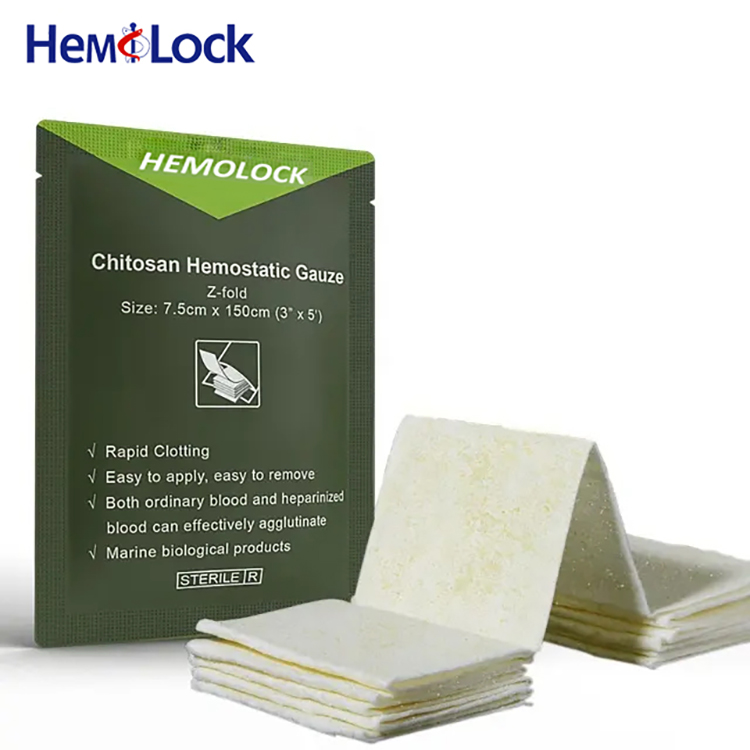
What is the advantage of using a hemostatic agent?
2023-05-04
In our daily lives, it’s common to experience wound bleeding, especially during outdoor activities, work, and sports. Hemorrhages are more likely to happen in these situations. Hemostatic agents are an effective way to stop bleeding, prevent infection, and quickly alleviate pain. Currently, there are various types of hemostatic agents available on the market. They can be classified into three types based on different standards.
The first type of hemostatic agent is the hydrophilic type. These agents are known for their compatibility with blood and can absorb at the site of bleeding wounds, creating a structure similar to a blood clot to prevent further blood loss. Hydrophilic agents are effective in treating mild to moderate bleeding wounds with small blood volumes, such as skin injuries like bruises and abrasions, anal or nasal bleeding, and more. Some commonly used hydrophilic hemostatic agents include iron oxide paraffin, ultraviolet cross-linked cellulose oxide, and others.
The second type of hemostatic agent is the polymeric type. These agents promote blood coagulation by interacting with coagulation factors, plasma proteins, and other elements in the blood, thus halting bleeding. Polymeric hemostatic agents are suitable for large wounds, surgical bleeding, deep incisions, tears, cuts, and other similar situations. The advantage of polymeric agents is their ability to quickly stop bleeding and work in different physiological environments. Some common types of polymeric hemostatic agents include polymer substances, thrombin compositions, coagulation factor preparations, and more.
The third type of hemostatic agent is the surgical type. This high-tech agent is designed for use on large wounds, such as surgical incisions and internal injuries. Surgical hemostatic agents rapidly form unique biomaterials on the wound surface, which stably and continuously stop bleeding while preventing infection. Common surgical hemostatic agents include gelatin sponge, clotting agents, and others.
It’s common for us to encounter situations where we experience bleeding from cuts, incisions, and other wounds. In such instances, using hemostatic agents can help quickly stop bleeding, reduce pain, and prevent infection. The main benefits of hemostatic agents as a regular emergency medicine include the following:
Firstly, hemostatic agents can stop bleeding quickly. When dealing with minor bleeding situations such as abrasions and incisions, using hemostatic agents can swiftly coagulate the blood flow and achieve hemostasis. In emergency situations, where bleeding is severe and medical assistance may not arrive promptly, hemostatic agents can minimize the time required for bleeding to stop. This helps protect the wound and prevent the occurrence of life-threatening situations.
Secondly, using hemostatic agents can alleviate pain. In cases of bleeding, we often experience pain and discomfort. The use of hemostatic agents can effectively reduce pain and alleviate discomfort. In situations such as medical rescue and field exploration, emergency situations can be resolved quickly, providing protection to prevent the injury from deteriorating.
Thirdly, using hemostatic agents can prevent infection. Hemostatic agents quickly coagulate blood, preventing external bacteria and viruses from invading wounds and reducing the risk of infection. This is a valuable advantage provided by advanced medical technology to significantly reduce pain and promote wound healing.
Finally, using hemostatic agents is simple, portable, and practical. Hemostatic agents can usually be applied directly to the injured area, making them easy to operate and use. Additionally, their compact size makes them easy to carry and store, and they can be taken along on travels, explorations, and outings to handle emergencies.
In summary, the benefits of hemostatic agents extend beyond rapid hemostasis, pain reduction, and infection prevention. Their ease of operation, portability, and simplicity make them a valuable addition to our emergency kits. Therefore, it is advisable to carry hemostatic agents with us in daily life and use them judiciously to minimize injuries, protect wounds, and prevent situations from worsening.





